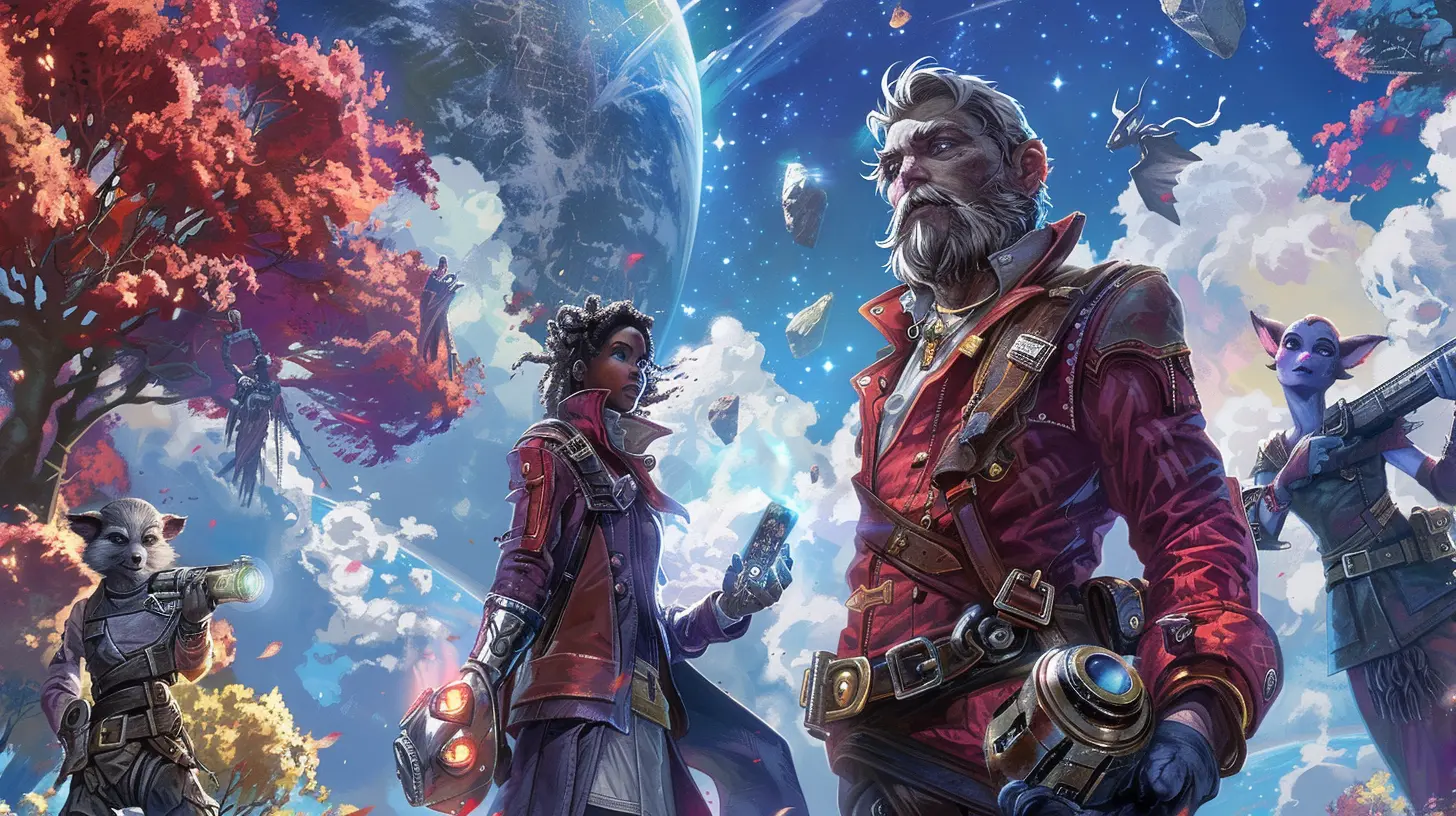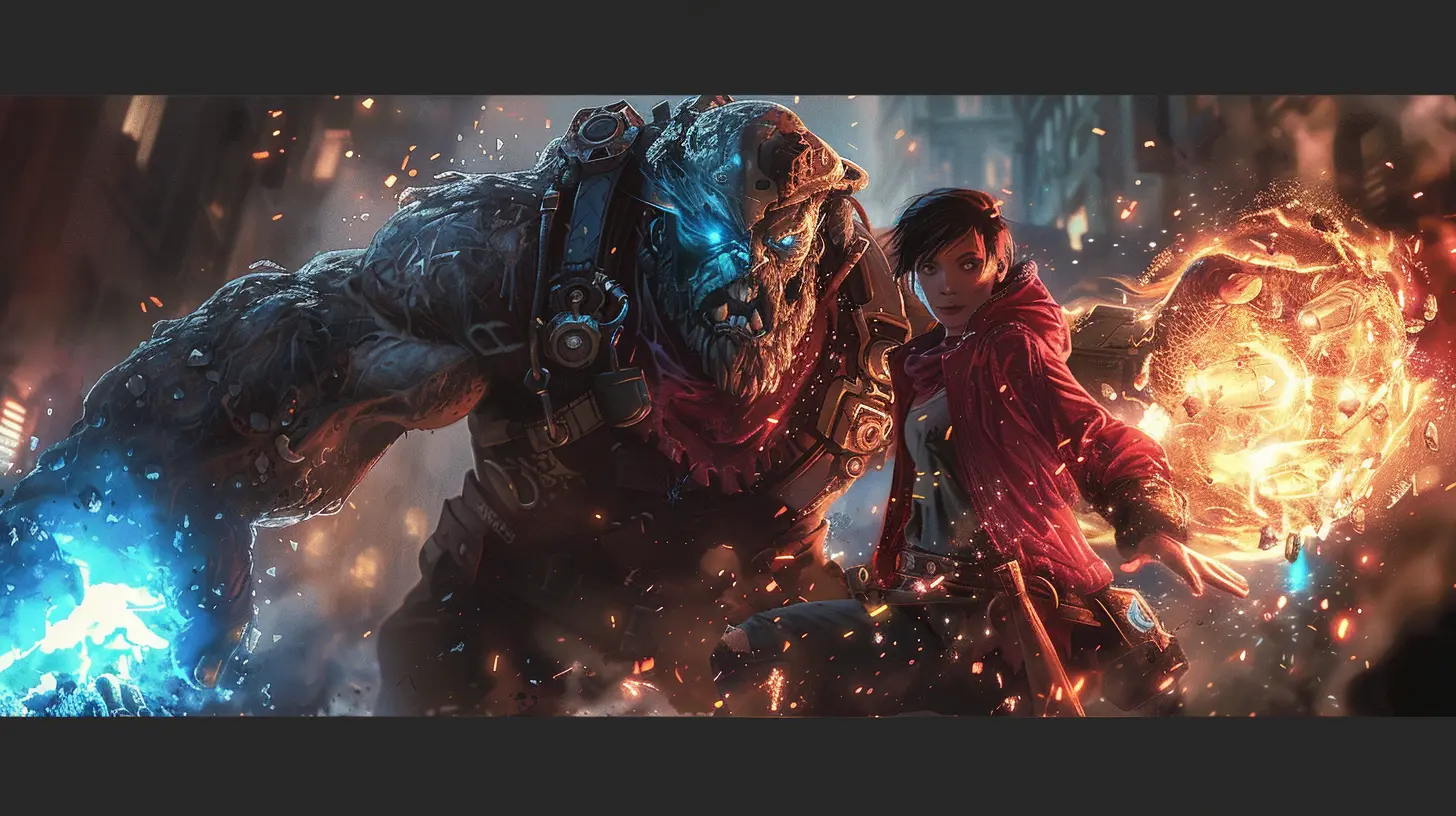How Free-to-Play Games Have Evolved From Casual to Core Experiences
10 August 2025
Have you ever found yourself hooked on a free game, hours slipping by as you chase that next level or perfect loadout? Well, you're not alone. Free-to-play (F2P) games have come a long way since their humble beginnings. Once considered throwaway distractions riddled with cheesy graphics, these games have evolved into deeply immersive experiences rivaling even the most expensive AAA titles. Let's dive into how F2P games climbed the gaming ladder from casual time-wasters to heavy-hitting core experiences. 
The Humble Beginnings of Free-to-Play Games
Let’s roll the clock back to the early days of free-to-play games. Remember the era of browser-based games like FarmVille or Bejeweled Blitz? These titles were a big part of what we’d call “casual games.” They were simple, easy to pick up, and targeted players who didn’t consider themselves “gamers.”The key appeal of those early F2P games? Accessibility. All you needed was a browser or smartphone, and voilà—you were gaming. You didn’t need a beefy console, technical know-how, or even much time. They were the equivalent of snack foods: quick, satisfying, and not something you overthink.
Yet, while addicting in their own right, these games were light on depth. They lacked the complexity or immersion of traditional "core" games like Call of Duty or World of Warcraft. But that was about to change. 
The Shift in Perception
So, what happened? How did free-to-play games go from casual to core? The shift wasn’t overnight. It was more like a snowball rolling downhill, slowly gaining momentum. A few key factors lit the fire:1. The Rise of Smartphones
Once smartphones became a staple in everyone’s pocket, the audience for F2P games exploded. Developers realized they had the potential to reach millions (if not billions) of players. Games like Clash of Clans and Candy Crush Saga turned free-to-play into a billion-dollar industry almost overnight.But here’s the thing: as people spent more time on their phones, they started craving deeper experiences. The days of tapping away mindlessly on a game like Flappy Bird were numbered.
2. Developers Got Smarter
Game developers began to understand that gamers weren’t a monolith. There wasn’t just one type of “gamer.” They started designing F2P games that could appeal to different playstyles, from casual dabblers to hardcore enthusiasts.Take Fortnite, for instance. Sure, it’s free, but the level of complexity and skill needed to excel in its battle royale format makes it feel like a premium gaming experience. Add in the ever-evolving seasonal content, competitive modes, and social aspects, and you’ve got a game that doesn’t just attract casual players—it hooks them into becoming core gamers. 
How Monetization Helped… and Hurt
Let’s be real: F2P games aren’t "free" in the truest sense. For developers to keep the lights on, they had to get creative with monetization. And here’s where things get interesting.The Good: Microtransactions That Enhance Gameplay
At their best, F2P monetization models add value without being intrusive. Games like League of Legends or Apex Legends let players purchase cosmetic items—skins, emotes, banners—that don’t affect the core gameplay experience. You can still compete at the highest level without spending a dime, but if you want to deck out your character like a rockstar, well, that’s on you.This model struck a chord with gamers. Why? Because it felt fair. You weren’t paying to win; you were paying for things that brought you joy or let you express yourself in-game. It’s like buying a fancy outfit in real life—it doesn’t make you better at your job, but hey, it feels good.
The Ugly: Pay-to-Win Mechanics
Not all F2P games nailed this balance, though. Some got greedy, introducing pay-to-win mechanics that drove core gamers away. Titles would gate progression behind expensive purchases or sell overpowered weapons that gave paying players an unfair edge.While these tactics made money in the short term, they tarnished the industry’s reputation. Players got wise to the schemes, and now, pay-to-win games are often met with rolling eyes or outright disdain. 
The Turning Point: Bringing Core Mechanics to Free-to-Play
Somewhere along the way, the industry realized that F2P games didn’t have to sacrifice quality or depth. In fact, they could deliver core gaming experiences for free and monetize intelligently along the way.1. Depth of Gameplay
Modern F2P games like Genshin Impact or Warframe are packed with the kind of features you’d expect in a blockbuster title. Think sprawling open worlds, rich storylines, intricate combat systems, and hours upon hours of gameplay.The catch? None of this feels “cheap” or “casual.” These games demand time, effort, and strategy, qualities that once defined only premium games. They’ve blurred the line between casual and core to the point where it’s almost nonexistent.
2. Social Connectivity
Gone are the days of gaming in isolation. F2P games now thrive on community and social interaction. Whether you’re teaming up in a Valorant match or ganging up on a raid boss in Destiny 2, these games make you feel part of something bigger.This social layer adds a new level of depth to F2P games. It’s not just about beating levels; it’s about building relationships, forming strategies, and sharing epic moments with friends.
What Makes Modern F2P Games So Addictive?
If you’ve ever spent more money on a free game than you care to admit, you know just how addictive these titles can be. But what’s the secret?1. The Feedback Loop
Most F2P games are masters of the dopamine hit. Leveling up, earning rewards, unlocking achievements—it’s all carefully designed to keep you playing. It’s like a slot machine, except instead of coins, you’re winning new gear or rare characters.2. The FOMO Factor
Free-to-play games are great at creating a sense of urgency. Think limited-time events, exclusive skins, or seasonal content. If you miss it, it’s gone forever (or so they say). This fear of missing out (FOMO) is a powerful motivator, keeping players engaged even when they’d otherwise move on.3. Constant Updates
Developers for modern F2P games are relentless. They’re always releasing new characters, maps, storylines, or weapons. This continuous stream of fresh content makes games feel alive and ever-evolving. You’re not just playing a game; you’re stepping into a living, breathing world.The Future of Free-to-Play: Where Do We Go From Here?
So, where does the F2P model go next? Honestly, the sky’s the limit. Virtual reality, cloud gaming, and blockchain tech are already edging their way into the F2P landscape. Imagine a free game where you actually own your in-game items through NFTs or one where the entire world is rendered in jaw-dropping VR.But here’s the twist: as F2P games get bigger and more complex, they’re also under greater scrutiny. Players are more aware than ever of shady monetization tactics, and they’ve proven they’re willing to speak up—or walk away.
That means the future of F2P won’t just be about innovation but also about trust. Developers who can deliver quality games while respecting their player base will thrive. Those who don’t? Well, they’re likely to get left behind.
Final Thoughts
Free-to-play games have come a long way from their roots as casual distractions. They’ve matured, grown deeper, and proved that “free” doesn’t mean “cheap.” Whether it’s a lighthearted match-three game or a complex RPG that rivals the best premium titles, F2P has something for everyone.But one thing’s for sure: the evolution of free-to-play games is far from over. If the past decade is any clue, we’re in for some incredible experiences ahead.
all images in this post were generated using AI tools
Category:
Free To Play GamesAuthor:

Luke Baker
Discussion
rate this article
2 comments
Renata McElroy
Free-to-play evolves, bridging casual fun and core depth.
December 4, 2025 at 5:36 PM

Luke Baker
Thank you! It's exciting to see how free-to-play games are increasingly offering engaging experiences that cater to both casual and core gamers alike.
Astraea Brooks
This article provides a fascinating insight into the transformation of free-to-play games. It's impressive to see how developers have successfully blended engaging mechanics with monetization strategies, appealing to both casual and core gamers alike. I appreciate your thorough analysis and can’t wait to see where this evolution leads next!
August 10, 2025 at 4:17 PM

Luke Baker
Thank you for your thoughtful comment! I'm glad you found the analysis insightful. It'll be interesting to see how this evolution continues to shape the gaming landscape!

